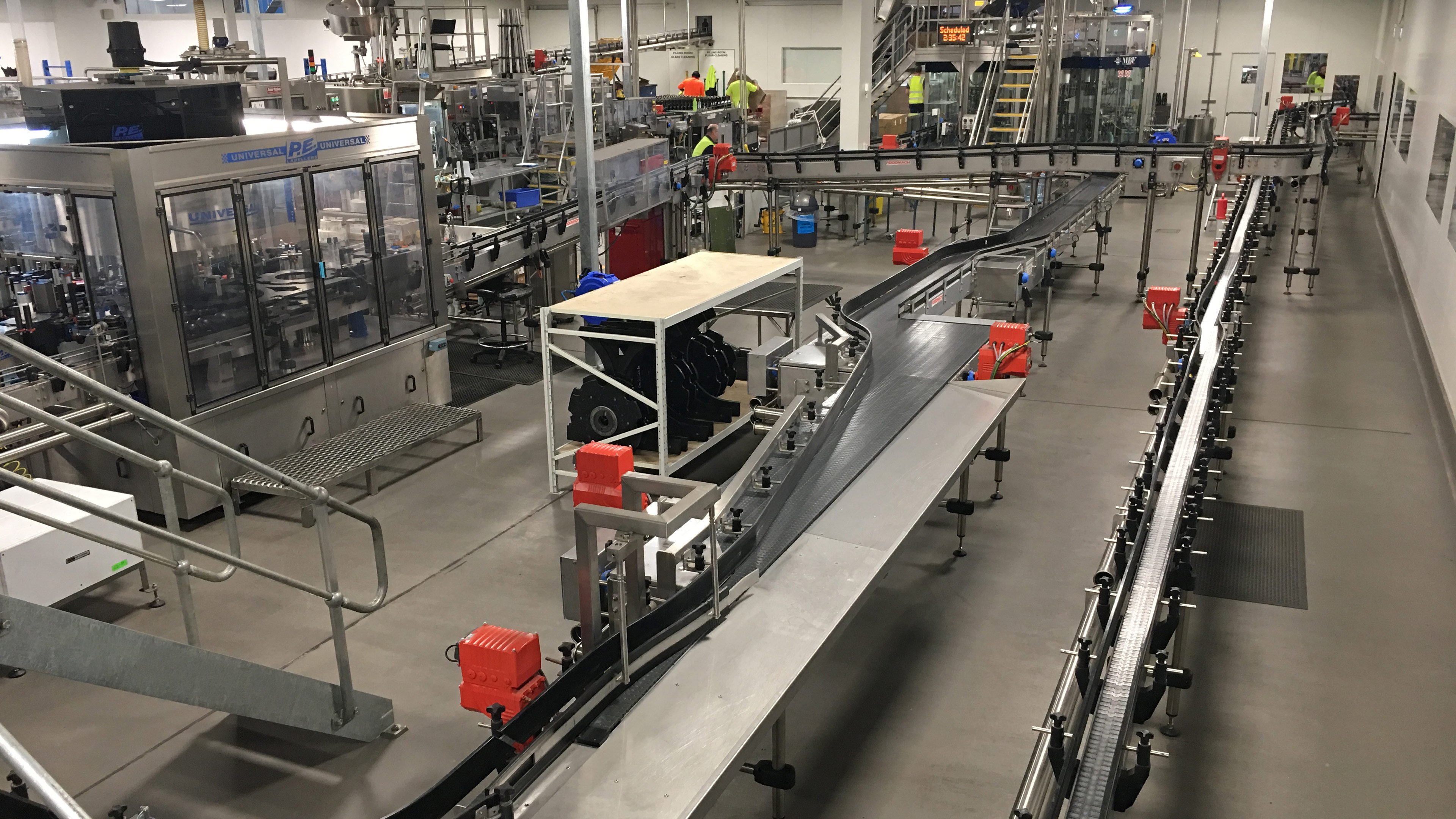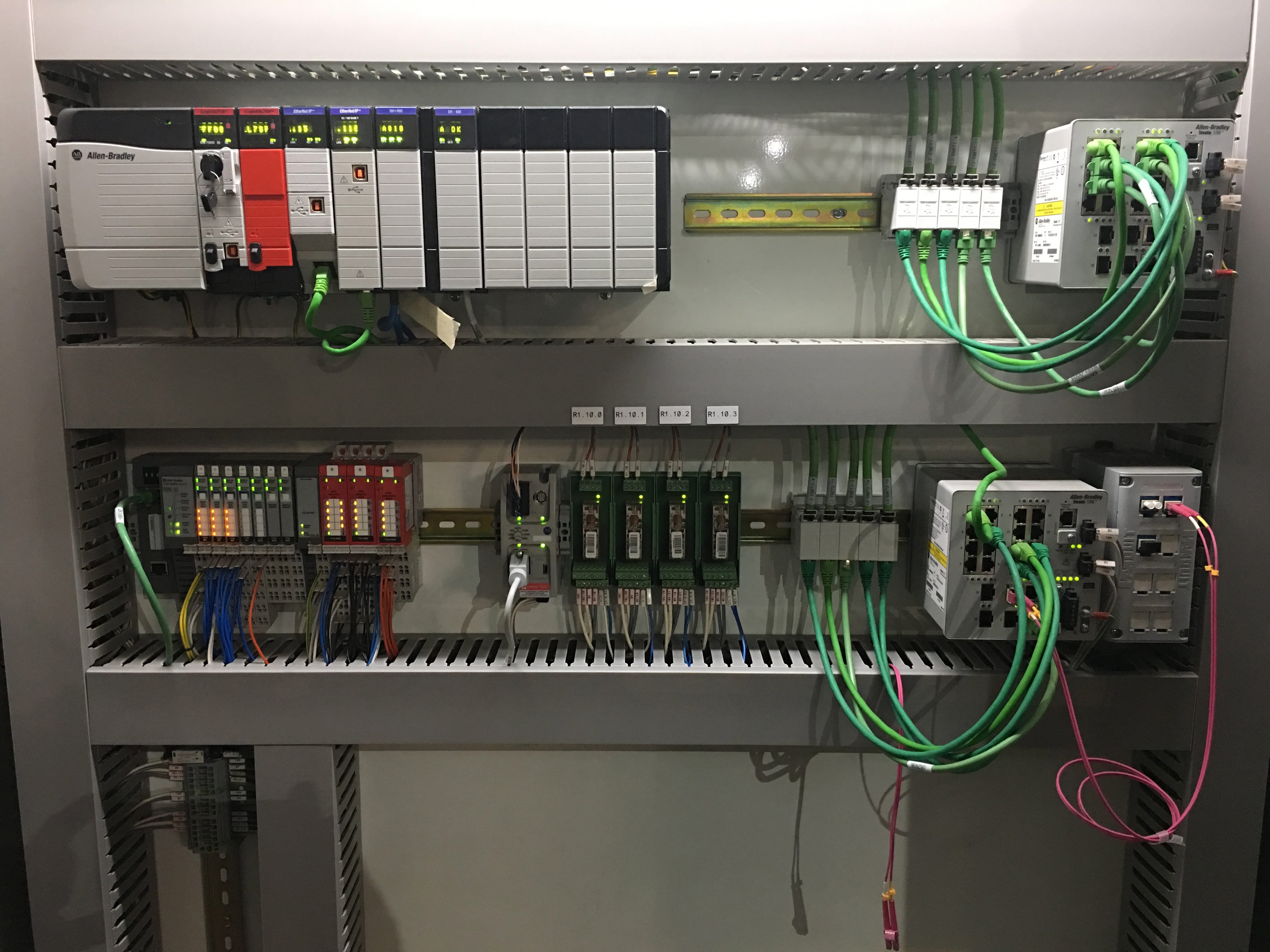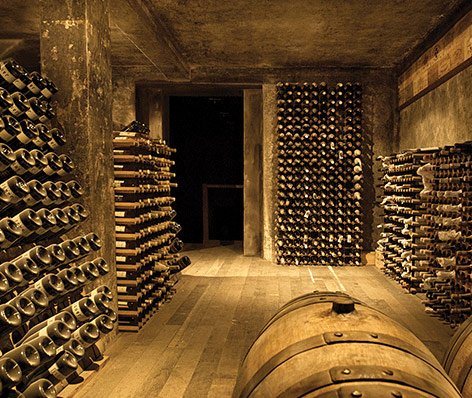The second line was controlled slightly differently in that the filler speed was established and the line itself will speed up or slow down to match whatever it needs to do the conveying. That is, the filler stays fixed at a determined speed and the conveying ramps up or down to suit, whereas with line one the conveying is at a fixed speed and the machines ramp up or down to suit.
Ide explains, “This suits our needs because line one is a very flexible line where we can bottle varying amounts and liquids including sparkling, cork, screwcap and crown sealed bottles but line two is our high volume line and need to run at speed. Line one can fill between 6000-9000 bottles per hour while line two is set to fill 12,000 bottles per hour of 750ml screw cap bottles.”
Talking the Talk
Having everything on a common visualisation platform provides a clear view across both lines and also helps operators to monitor the operational status of the winery. FactoryTalk View SE provides unified site-wide monitoring . Bottling line control via three VersaView® terminals on the plant-floor with the local edition of FactoryTalk View SE (providing redundancy and security for line control) and PanelView™ Plus human-machine interfaces (HMI) for individual machine level control.
“The standalone units for the overall control of the line have been fantastic, basically, we can go into them, select a recipe of what bottle we want to be running and they will basically set the line with the parameters that need to run that bottle. As soon as we select a recipe, all the parameters go into the drives and it limits the filler speed and sets everything else up that we need to run that particular bottle, ” said Luke Wilson, senior process engineer at Yalumba.
“In the very near future we will be rolling out FactoryTalk Metrics across the bottling line which will be used to capture production data, provide real time OEE, uptime performance indicators and graphical representations through FactoryTalk Delay Accounting and VantagePoint®,” he added.
The Angaston site has six thin clients that also allow operators to keep a close watch on trends using remote access to FactoryTalk ViewPoint without having to come to site. This system is integrated with Yalumba’s proprietary ‘wine management system’ which is a non-commercial database of all vintages for the purpose of label integrity.
“The Integrated Architecture® system from Rockwell Automation made it very quick and easy to bring the system online and up to speed. We have developed conveying blocks using Rockwell Automation Add on Instructions. Using these instructions has greatly reduced the design and commissioning times required for such a project,” explained Alder.
Fuss-Free Filling and De-Palletising
“In what was a good outcome for Yalumba, the OEM team at Rockwell Automation helped to integrate the Allen-Bradley CompactLogix™ controller in the new filler which was imported from Italy. This provided the capability for easy commissioning and integration that would not have been possible with another controller,” said Ide.
According to Rob Campbell, OEM account manager, Rockwell Automation, “This is a good example of how we can leverage our global reach and collaborations to provide added value to our customers and most importantly make it a seamless process.”
CompactLogix also controls the new de-palletiser, manufactured locally by FOODMACH and Servo drives from Rockwell Automation are used to run the lift motor and sweep where it moves the bottles in a single layer.
“The de-palletising is a fully automated process which has helped reduce the manual labour at the plant. At the end of the second line we have a robot that arranges pallet formation automatically. The control for both lines allows the system to monitor the intake and output of the entire line, speeding it up or slowing it down depending on whether there are any issues, hold ups or backlogs,” explained Ide.
Producing Quality Wines Today and for Future Generations
To maintain the flavour and freshness of each bottle of Yalumba wine, dissolved oxygen meters with alarming have been integrated into the bottling line to avoid oxidation. Line one contains a carbon dioxide (CO2) meter to measure dissolved CO2 in sparkling wine.
The quality systems are integrated with the SCADA system so data is collected directly with FactoryTalk Transaction Manager to provide information on the product being bottled through the filtration skid and store all relevant information about the batch in FactoryTalk Historian for future reference and quality control, reducing the risk associated with manual reporting.
The wine bottling and labelling is carried out in an insulated room that is controlled by an air conditioning system. CompactLogix controls the air conditioning system so that parameters such as relative humidity, dewpoint and room temperature are monitored on the SCADA system.



